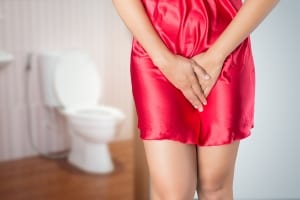Herzliya Medical Center
Tel: +972-9-959-4888
09:00-18:00
 Impairments of urination in women include:
Impairments of urination in women include:
Urinary incontinence is generally defined as “a complaint of any involuntary urine loss”. 5-10 percent of older women have severe urinary incontinence in their everyday lives, causing a dramatic and negative change in their quality of life. Many women in this group suffer deterioration in their self-confidence.
Urinary incontinence is an international phenomenon, and it is estimated that about one-third of adult women (over the age of 40) suffer from urinary incontinence at least once a week. In spite of the difficulty and the impairment in quality of life, many women avoid discussing and revealing these disorders. Some feel embarrassment or shame and suffer in silence; others do not bring the topic up due to the incorrect perception that treatment does is ineffective.
Even a tiny amount of urine leakage (a few drops…) can be felt by the woman to be seriously disconcerting. The extent to which the woman is bothered by this is influenced by many factors, such as cultural values, expectations, living environment and physical activity. Urinary incontinence can almost always be improved and even cured by simple means. Therefore, if the urinary incontinence is perceived by the woman as disturbing, an investigation can and should be performed, and treatment offered.
The common types of urinary incontinence in women are:
Even though stress urinary incontinence is the most common incontinence in women, urge incontinence (“overactive bladder syndrome”) is the most common type of urinary incontinence in older women and is defined as involuntary loss of urine that occurs together with or preceded by a sensation of urgency to urinate. Additionally, these women may experience increased frequency of urination during the day and at night. This problem is caused by uncontrolled contractions of the wall of the urinary bladder, usually for a poorly understood reason, constituting a manifestation of a defect of the neural control of the urinary bladder.
The treatment of involuntary leakage of urine in women may be conservative, or medicinal, and the therapeutic approach is based on the clinical findings and the degree of disturbance felt by the woman.
It is possible to start with simple measures such as lifestyle changes. For example, setting fixed times for urinating, cutting down on caffeine consumption, quitting smoking and losing weight. A further simple measure is physiotherapy of the pelvic floor muscles, which can be offered as the first line of conservative treatment for women suffering from urinary incontinence.